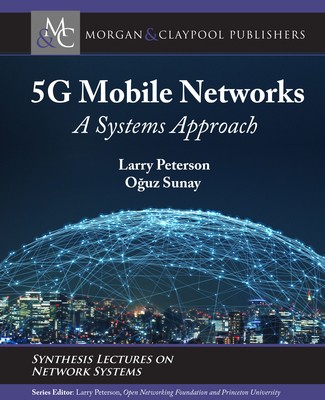| 5g Mobile Networks: A Systems Approach Contributor(s): Peterson, Larry (Author), Sunay, Oğuz (Author) |
|
 |
ISBN: 1681738902 ISBN-13: 9781681738901 Publisher: Morgan & Claypool OUR PRICE: $52.20 Product Type: Hardcover - Other Formats Published: July 2020 * Not available - Not in print at this time * |
| Additional Information |
| BISAC Categories: - Technology & Engineering | Mobile & Wireless Communications - Technology & Engineering | Telecommunications - Technology & Engineering | Signals & Signal Processing |
| Dewey: 621.384 |
| Physical Information: 0.25" H x 7.5" W x 9.25" (0.77 lbs) 73 pages |
| Descriptions, Reviews, Etc. |
| Publisher Description: This book describes the 5G mobile network from a systems perspective, focusing on the fundamental design principles that are easily obscured by an overwhelming number of acronyms and standards definitions that dominate this space. The book is written for system generalists with the goal of helping bring up to speed a community that understands a broad range of systems issues (but knows little or nothing about the cellular network) so it can play a role in the network's evolution. This is a community that understands both feature velocity and best practices in building robust scalable systems, and so it has an important role to play in bringing to fruition all of 5G's potential. In addition to giving a step-by-step tour of the design rationale behind 5G, the book aggressively disaggregates the 5G mobile network. Building a disaggregated, virtualized, and software-defined 5G access network is the direction the industry is already headed (for good technical and business reasons), but breaking the 5G network down into its elemental components is also the best way to explain how 5G works. It also helps to illustrate how 5G might evolve in the future to provide even more value. An open source implementation of 5G serves as the technical underpinning for the book. The authors, in collaboration with industrial and academic partners, are working towards a cloud-based implementation that takes advantage of both Software-Defined Networking (SDN) and cloud-native (microservice-based) architectures, culminating in a managed 5G-enabled EdgeCloud-as-a-Service built on the components and mechanisms described throughout the book. |